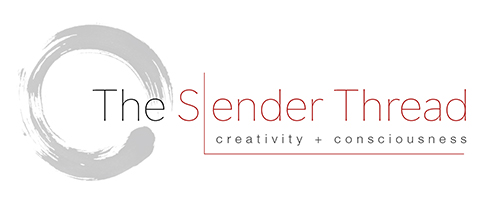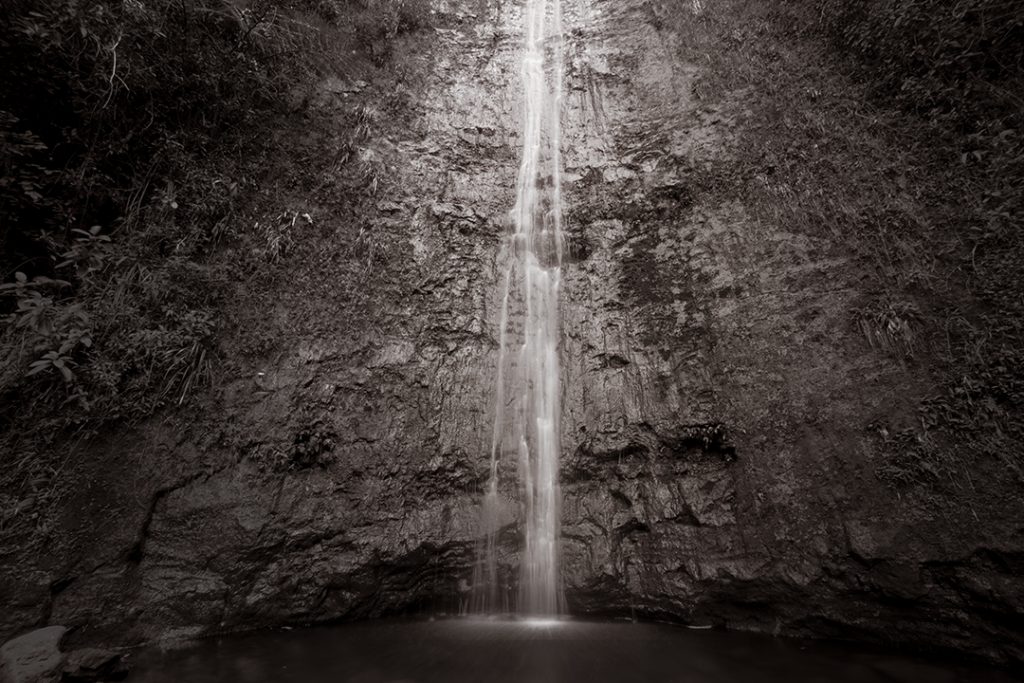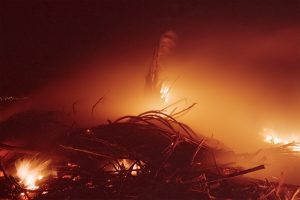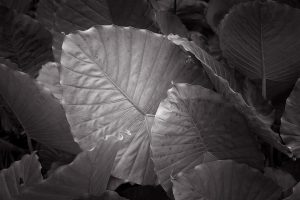“There’s a crack in everything; that’s how the light gets in.” —Leonard Cohen
Everything is broken. Or so it seems. There has been a deep tear in the fabric of our collective life, a raw stain on the common good—with so much suffering and death. Fire and flood, wind and rain, rising tides and dying seas, violence and injustice; these aren’t going away and are intensifying—quickening at an alarming pace. The planet is currently heating to unprecedented levels. The negotiated truce of human rights and nuclear deterrence has given way to blustering threats of madmen hell-bent on childish one-upmanship. The most powerful office of the most powerful country on earth lacks any modicum of intelligence, grace, empathy, and diplomacy. When cruel force makes right, the common good is lost.
Many people and traditions have predicted this era: the Hindu’s Kali Yuga (our present age in which righteousness is said to be diminished), the apocalyptic messages from the Virgin Mary at Medagorge, the visions of poets and artists, and the great prophesies of native peoples. The Dalai Lama calls our time, “the age of degeneration.” The list goes on. We only need to look within to know without a doubt that these teachings have truth. The energy field in the body knows. It sees with its reservoir of intelligence and experience that our common life is being rent asunder. The human organism is deeply related to the planet, to the state and condition to others both near and far, to the awe-inspiring stories of courage and selfless heroism, and to the sad spectacle of human ignorance and avarice. We know this is happening, but what can we do?
Good and evil occupy their places as a polar axis in the world. As powerful, negative, death-dealing forces are being released, natural law strives for balance. To the degree that the world becomes cracked apart is the same degree that lawful opposite forces must arise. What can give us hope and perhaps show us a path forward? How can the banished light return?
We often need to break before we can unify and heal. Only in our most difficult moments do we acknowledge that something is not right, that we are fragmented and not whole—and that the world and others need our attention and care. We need to allow and even embrace the darkness, for our feelings can teach us that personal despair can transform into collective grief and anger, and that anger, in turn, can transform into a very positive force for the good. Even our rational minds know that to achieve unity we must first see and embrace, and then go beyond the region of duality where contradiction resides.
Throughout my life, I have tried to maintain three practices that have helped me in numerous ways. The first is the discipline of sitting—striving to become rooted in the body, disengaging my identification with ordinary thought and reactive emotion, and seeking the mind’s witness. The second is the effort to work and maintain my life commitments in spite of all of the usual resistance, laziness, and inattention. And the third practice is approaching the profoundly difficult necessity of seeing what is. From these efforts, from time to time, a new condition appears, a state of mind and being with greater presence, intelligence, and connectedness to others as well as the deeper parts of myself.
From the action of seeing what is, striving to hold a sober and embracing vision of our current reality—and not turning away in denial, fear, or impotence—we are already initiating positive change. Many times, I have witnessed in my own life that in the moments when despair dominates and takes over, when the darkness is at its apex, something begins to turn and change. When I stay with the feelings of grief or despair and do not resist them, a light begins to develop that can offer hope and give hints of the shape of a yet-unrealized reconciliation and solution.
In art critic Suzi Gablick’s book, Conversations Before the End of Time, she writes in response to a question whether creative individuals could help turn around some of the apocalyptic conditions in the world today: “At this point I am unclear as to what can and cannot be turned around. I do think that living in the reality and truth of our situation is one small step towards mastery of it… Living in the truth of our situation is related, I believe, to really contacting the grief that one would feel at the loss of this beautiful life that we have here on this planet, or the inability of the human race to sustain itself. Somehow or another, this grief has to be experienced fully, devastatingly, before we will start making the necessary changes.”
Ram Dass calls the concept of seeing and living the truth of our situation, “fierce grace.” “The dark moments we are handed in life give us the chance to dig deeper into ourselves as human beings, to turn our lives away from separation and into compassion and interconnection.”
The banished light can only return through human striving, by opening to the question with our entire being: in what way can we live a human life, one filled with integrity and shaped by conscience?
The challenge is to move this questioning beyond the mind; to embrace the question which does not contain words or concepts or have an answer, but presents an opening, a doorway to a deepening sense of experience, one that includes the body, mind, feelings, and soul. What does this mean for artists and creative individuals? Many artists and creative individuals are deeply searching for ways to cultivate and preserve empathy for the world and others, to renew hope, and to revive passionate caring. They sense the danger to our common humanity if any one of us of runs away in fear or panic, becomes cynical or apathetic, or turns a blind eye to the world.
To be creative is to participate in the ongoing process of making our world anew, of searching for innovative solutions, and offering a vital, special energy to our planetary existence. Jeanne de Salzmann, Gurdjieff’s successor, in observing how the vibrations of our world have been deeply affected, brought down, by the energies and actions of humanity, said simply: “The earth needs our work… now.” If humanity has helped lower the level of vibrations, then humanity can help raise it once again.
William Segal, also a student of Gurdjieff, perceptively regards the conditions of our time in The Structure of Man: “Power potentials have been released which threaten to upset cosmic balances. Ironically, the more gigantic and astonishing our manipulation of these energies, the more puerile and insignificant our understanding of them. Philosophers and scientists are coming to agree that not only do we need a deep alteration in the present state of mankind, but that this radical shift depends solely upon our relationship to consciousness—the invisible, fundamental energy behind phenomenal existence.”
Seeing, feeling, and deeply engaging the mysteries of the world brings us closer to the joy of consciousness. Seeing and feeling the contradictions within ourselves and witnessing those very same contradictions reflected in the world itself brings us closer to the sorrow of conscience.
Everything we observe in the world, everything we react to, and everything we see externally also exists within us—our culture is nothing more than a reflection of our collective state of being. And everything we observe in ourselves, our contradictions as well as our potential unity, is manifested in the world itself. If we wish to effect a change in the world, to make sense out of the fractured conditions of our collective existence, we must begin with ourselves. If we wish to awaken from the dream that we are, we must refine and transform our experience, and strive toward a state of inner unity and wholeness of being.
What the world needs from us is a vision of hope, of renewal, of the sanctity of life and the sacredness of experience. If we genuinely care about the future and the legacy we will leave behind, we must actively seek to be agents of change and re-assume our rightful role of midwifery, giving birth to new understandings and the poetry of insight that so desperately needs to come into the world today. We must strive to become whole, self-actualized human beings, capable of listening to the voices in the subtle realms within and without, passing through our world unseen and unacknowledged in our present state.
I have no doubt that the only real agent for change in this world is the individual, multiplied into societies, nations, and cultures. The power of creativity remains within the reach of us all, yet our individual and collective fate lies in the hands our god-given free will. The will to respond to the song of the world and the call of conscience is within our grasp, right here, right now.
While the Vietnam war was in progress, I was a young photojournalism student at Kent State where I witnessed and documented the events surrounding the deaths of 4 students from National Guardsmen’s bullets. This had a profound impact on me and represented a turning point in my way of thinking. I left journalism behind and took the decisive step to become an artist. I had a growing awareness that something else was needed beyond the necessary reportage, resistance, and protest. I began to feel that evolution of human consciousness was the only real answer—and represented the only possible solution to the problems of the modern age. We must strive to see more, feel more deeply, and awaken to the deeper levels of consciousness inherent in our human potential. True awakening—of consciousness and conscience—is the only real agent of change that can make a difference in our lives on this planet, as individuals and nations. And in this search for awakening, art and creativity can help; they provide a pathway for personal and social evolution.
For many years, I felt alone in this way of seeing, and unfortunately even amidst my peers, other artists and photographers. It wasn’t until the closing decade of the last century that I found my attitudes and beliefs corroborated in the public domain, in one of the most significant and stirring speeches that I have ever heard, from Vaclav Havel, the playwright President of the Czech Republic, in an address to the joint session of the U.S. Congress in March 1990:
“The salvation of this human world lies nowhere else than in the human heart, in the human power to reflect, in human meekness and in human responsibility… Without a global revolution in the sphere of consciousness, nothing will change for the better in the sphere of our being as humans, and the catastrophe toward which the world is headed—be it ecological, social, demographic or a general breakdown of civilization—will be unavoidable. If we are no longer threatened by world war or by the danger that the absurd mountains of accumulated nuclear weapons might blow up the world, this does not mean that we have definitely won. We are still incapable of understanding that the only genuine backbone of all our actions, if they are to be moral, is responsibility. Responsibility to something higher than ‘my family’, ‘my country’, ‘my company’, ‘my success’—responsibility to the order of being where all our actions are indelibly recorded and where and only where they will be properly judged.”



